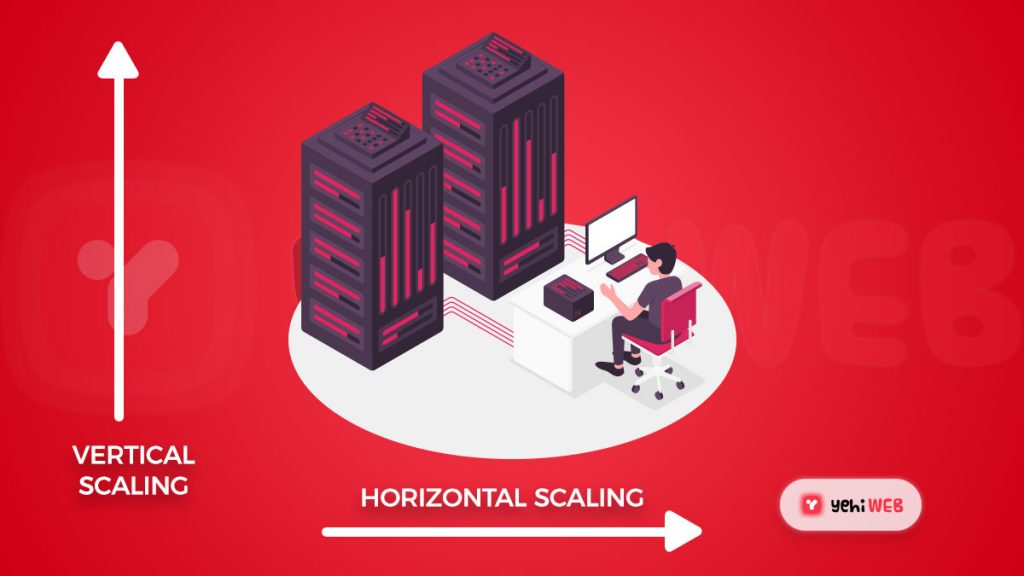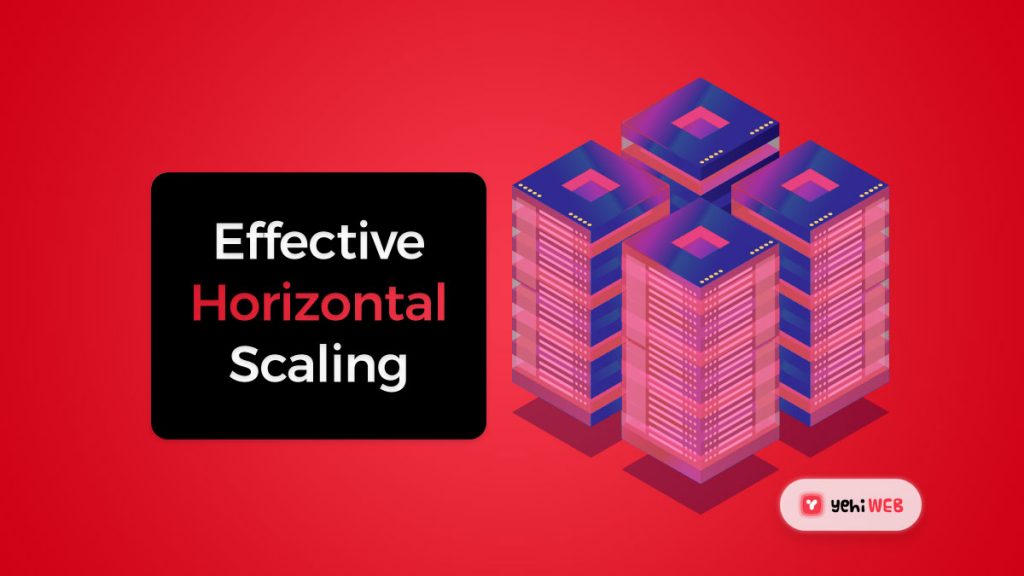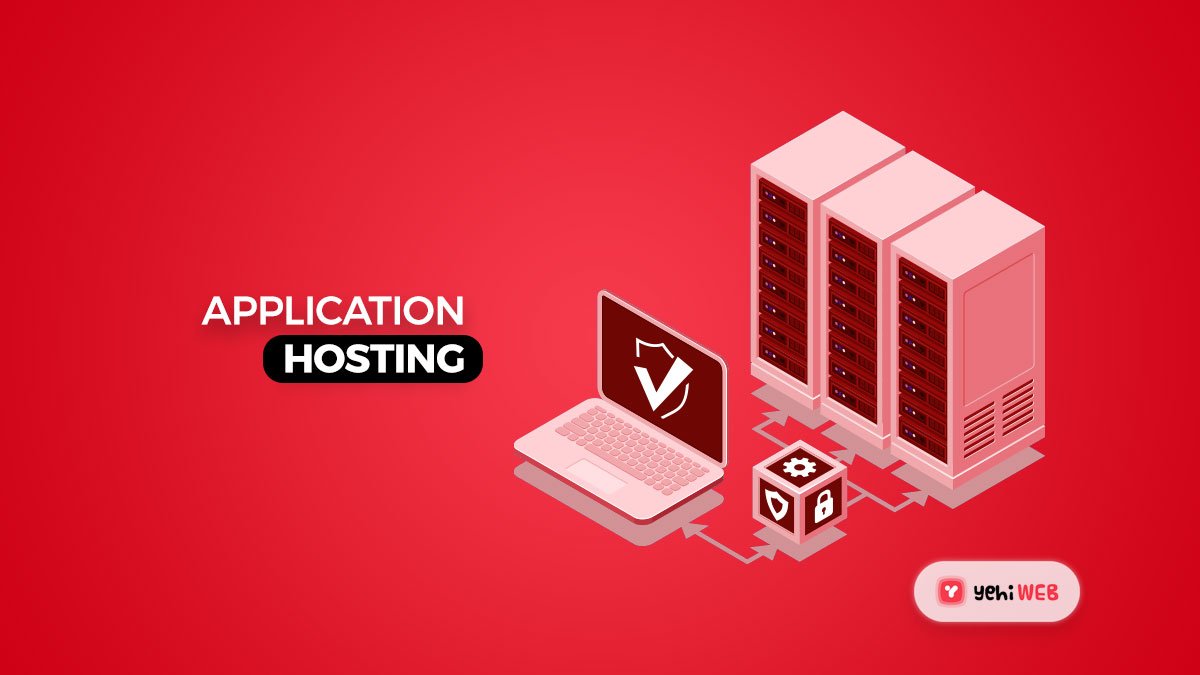Application Hosting
In this article we will discuss, what’s the meaning of the following Concepts: Horizontal and vertical scaling. Choosing the right solution can have a significant impact on performance and cost-effectiveness.
Estimate applications’ reach
Estimating the scope of our applications is one of the most challenging aspects of system design and application hosting. While it can come as a surprise, you cannot foresee the future.
The best thing that you can do is project the user base and recruit computational power on the basis of the projection.

However, what if the projection went wrong?
You can see that the server is being overloaded in peak hours by looking at the first diagram above. That is, to say the least, highly inconvenient.
The contrary example, as seen in the second graph, maybe a problem if the server is idle for a significant portion of the workday and is unable to achieve optimum utilization, resulting in a scenario where you are paying for unused resources.
It’s critical to be able to delegate more or less resources based on your current consumption or planned growth. Scalability is the term for this form of resource distribution.
Private Cloud, powered by VMware and NetApp, combines the power, efficiency, and security of an isolated environment on enterprise hardware with the benefits of a traditional public cloud. This article will cover the industry standards for scaling the infrastructure, with an emphasis on scaling up/out.
Vertical Scaling
Vertical scaling (scale-up) is a method of increasing capacity by adding more resources to an existing machine or single node.
Vertical scaling is a simple method that involves upgrading the server’s physical components (CPU power, RAM, disc space, or bandwidth).
Another way to scale vertically in cloud environments is to extend the resource allocation to the specific build using virtualization software like VMware, Red Hat Virtualization, or Oracle VM VirtualBox. This category may also include software optimization.
Small to scale enterprises benefit more from vertical scaling.
Initial Cost
Scaling up or vertically is generally more cost-effective for many reasons:
In terms of effectiveness per unit, the hardware is less expensive. This will be discussed to some degree in the drawbacks.
Software licensing and implementation are less costly since there is only one machine. Maintenance costs are reduced, including power, server racks, and cooling.
READ MORE
2021’s Top Cloud Computing Trends
Communication between processes
Network communication between machines is faster than communication between running processes within the same node. Since no external interaction is required, the coordination route between applications and services is shorter, resulting in more effective execution because notifications and details about activities and demands are almost instantaneous.
Data Consistency
The vertical scaling offers another major benefit because data are uniform. When you only have a single processor, synchronization and data consistency between nodes aren’t a concern. Data consistency is particularly important for high-concurrency applications that rely on quick communication and need to be synced instantly.
Vertical Scaling’s Disadvantages
When vertically scaling, there are a few disadvantages to remember that can be a major obstacle.
Point of Failure
The most significant drawback of making a single instance of an application is that it constitutes a single point of failure. If the computer fails for whatever cause, the application will also fail.
Hardware failures, corrupted software, malware or other forms of malicious targeted attacks, and even physical accidents in the data center will all result in costly downtime.
Limitations
The sum of hardware that can be added to a single machine is limited. In terms of cost-performance, it becomes more costly to reach a certain threshold.
Apart from the financial side, there are also hardware and software limitations.
If part of software can’t be parallelized, for example, adding hardware didn’t improve because it will always take the part that can’t be improved plus the rest of the software’s execution time. Amdahl’s law is the name for this rule.
Downtime
Due to hardware changes, it can translate into downtimes more frequently than not. The server might have to be shut down during provisioning in order to add resources and for the software to embrace the new allocation.
Increased disc space may require the addition of another drive.
There is also a possibility that disc synchronization takes extra downtime until the server is fully operational.
Horizontal Scaling
On the other hand, horizontal scaling introduces another abstract layer. You have a number of multiple nodes that make up a distributed network instead of using a single server to process this whole operation.
“In short, horizontal scaling adds more machinery and creates an interconnected pool of resources.”
The key objective here is to distribute the load evenly between the nodes. This setup also involves tools for virtualization, clustering, and load balancing.
You can create your own private cloud and optimize the allocation of resources.
This is the preferred choice for giant operations and applications with high I/O concurrency because of the distribution of the load, the reliability of the hardware, and the reduction in degradation.
Advantages (Horizontal Scaling)
For high-level operations, horizontal scalability is a reliable choice and the best for long-term viability.
Redundancy and Resilience
Not only is the probability of loss of data reduced, as it is spread to all nodes in the environment. This minimization is one of the reasons private clouds are so advantageous for bigger companies.
Scalability
When scaling an existing pool, the downtime is virtually non-existent since you are only adding additional machines to the existing pool. The number of instances that can be added is virtually limitless.
As a result, this alternative provides theoretically limitless growth.
Likewise, the inverse is real. You can just remove a few machines if demand drops, and you won’t be left paying for peak traffic hardware.
Endpoints
Horizontal scaling provides additional endpoints for connections to the client. The load is spread across all nodes, offering greater overall experience, increasing network performance and security, and minimizing heavy use of individual components.
Disadvantages (Horizontal Scaling)

Components
Although horizontal scaling defends against single points of failure, the fact that there are multiple nodes will make the maintenance protocol more complicated. Virtualization tools and load balancing for a proper service must then be included.
Because of the added complexity, the initial costs of implementing this solution are usually higher.
The graph below illustrates how the cost-performance relationship works under each scenario.
Network Communication
System performance is strongly influenced by communication between processes and routines. While internal communication with a single node is optimal, cloud computing technologies depend on network communication, also known as “Remote Procedure Calls (RPC).”
RPC has been vastly enhanced, but it also brings complexity to the structure and is inefficient in comparison to internal communication, which can be essential in terms of data consistency (continuous synchronization of data between nodes).
Which to choose between Horizontal and Vertical Scaling?
Horizontal scaling is suitable for big operations and applications with strong concurrency because it distributes load, provides stability, and reduces downtime, among other aspects.
Vertical scaling will be the best choice for small to medium-sized businesses because it is a less challenging environment, initially affordable, and delivers superior value for the price.
Using a private cloud allows you to scale horizontally and vertically with ease.
Consider the long-term viability of your business.
Can you scale up or scale out as demand for your product soars and you see a need to expand the app’s accessibility, power, and presence?
To put it another way, is horizontal or vertical scaling the best option for your business?
The approach to applying computing resources to your infrastructure is at the heart of the difference. You’re adding more resources to the existing machine by vertical scaling (also known as “scaling up”). By adding more machines to the network and sharing the processing and memory workload across multiple devices, horizontal scaling (also known as “scaling out”) allows you to get more power into your system.
You can think about vertical scaling such as dropping your Toyota and buying a Ferrari if you need more power. You can fly at top speed with the windows down and look fantastic in your super-fast car. However, while Ferraris are fantastic, they are not very practical, they are expensive, and they can only take you so far until they run out of gas. (Not to mention the fact that there are just two seats!)
You get the addition of horsepower from horizontal scaling – not by dipping Toyota to Ferrari, but by adding another car. In reality, horizontal scaling can be compared to driving several vehicles at the same time. Maybe neither is Ferrari, but there needs to be no one of these machines: you both have the horsepower you need in the fleet.
Why Is It Better To Scale Out Rather Than Up?
You must also remember what is at stake when scaling up or scaling out when choosing between horizontal and vertical scaling.
You’re swapping in a slower server for a bigger, faster one in the Toyota-for-Ferrari example.
However, you’ll be throttling yourself while the machine is down for the update if you do this. What happens if the traffic increases again in the future, and you have to repeat the upgrades? There is a limit on how many instances you can “scale up” to solve the dilemma in this way.
Horizontal scaling is almost always superior to vertical scaling because it avoids resource constraints. Horizontal scaling allows you to maintain your entire pool of computational power online while adding some of what you already have, rather than having your cloud down while scaling up to a stronger one. You get the advantage of elasticity when the app is sized horizontally.
Availability in real time and on demand
Hardware capability is unrestricted.
The cost of everything can be related to how it's used.
You are not obligated to pay for peak demand all of the time.
Redundancy is built-in.
It's simple to scale and resize to suit your needs.
How To Achieve Effective Horizontal Scaling
There are important best practices bearing in mind in order to make the horizontal scaling operation super compatible.
First of all, keep the application as stable as possible on the server-side. Any time that the application relies on server-side monitoring, the user session is inextricably linked to that specific server. If, on the other hand, the browser-side stores all session specifics, the session can be seamlessly transferred through hundreds of servers. Literally. It is the very epithet of horizontal scale that can exchange a single session (or several thousand or million individual sessions) between servers.
The second goal you should bear in mind is to construct your app using a service-oriented architecture. The more autonomous yet interactive logical building blocks your application has, the more individuals you can measure each of these blocks when the load needs to be used. Make sure the app is developed with separate web, device, caching, and database levels. This is important for cost efficiency because you would have to scale up each part of your application to the most demanding levels of service levels without this microservice architecture.
Saad Shafqat
Related posts
New Articles
What is the difference between FMWhatsApp and GBWhatsApp?
In the world of messaging apps, WhatsApp reigns supreme as one of the most popular platforms for connecting with friends…


